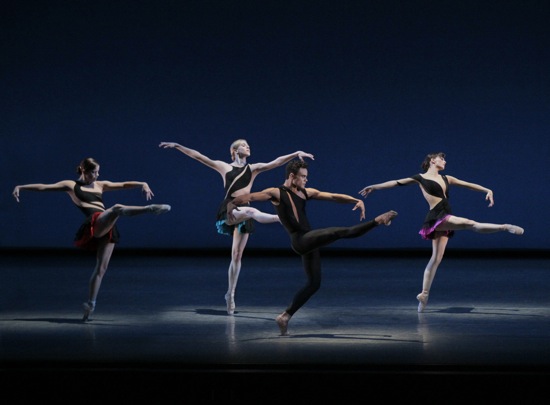
Ashly Isaacs, Claire Kretzschmer, Taylor Stanley, Lauren Lovett in Peter Martins's Mes Oiseaux. Photo: Paul Kolnik
Have you noticed that many new ballets look like older ballets? Either that, or they introduce kinks that take them far outside the classical vocabulary. The best ballet choreographers have a way of making steps that every advanced student dancer does many times a day look newly expressive, or interweave with the music in deeply satisfying ways.
I can’t say that Peter Martins’s new work for the New York City Ballet’s spring season is refreshing in that way. Martins, as the company’s ballet master in chief, has responsibilities that go beyond falling in love with an idea or a piece of music and being consumed with choreographing a dance to mate with it. The company’s Spring Gala, at which his Mes Oiseaux premiered, was titled “À La Français.” In accord with that, Martins set his salute-to-France ballet to contemporary composer Marc-André Dalbavie’s Trio No. 1—an intriguing piece expertly played by Kurt Nikkanen (violin), Ann Kim (cello), and Cameron Grant (piano). The costumes (for the women, tricky puzzles of black and faux-skin with flippy little skirts of different colors) are by the French fashion designer Gilles Mendez.
Martins also has the job of fostering new talent within the company. So his ballet features a trio of corps de ballet women (Lauren Lovette, Ashly Isaacs, and Claire Kretzschmar), with a man (Taylor Stanley—also a corps dancer) to help them out and show them off. Mes Oiseaux resembles Balanchine’s great Apollo in its setup, but the talented Stanley doesn’t play a young harnesser of the muses. He’s a no-nonsense facilitator with stage presence; a fine, bold technique; and a certain grim attention to duty. After heavy piano chords have made an announcement in the dark and Mark Stanley has brought up the lights, the first thing he does is to lift each woman in turn, playing no favorites. Then he does that again.
As you might expect, the four come and go, unite in duets, display themselves in solos, and, for example, crisscross the diagonals of the stage with leaps. In this brisk little ballet, they don’t relate to one another in particularly meaningful ways. Martins didn’t go easy on his cast. Dancing to turbulent piano and a buzz of strings, Isaacs goes through her very demanding solo, with a go-for-broke amplitude that’s touching but comes close enough to instability to make you fear for her. Lovett’s solo is crisper and saucier, making a thing of the pinup-girl stances that Balanchine may have picked up in his early days of choreographing on Broadway; she attacks the steps with grave charm, hampered slightly by a fashionable coiffure that all but covers one of her eyes with a slash of hair. It may have been in the duet by Stanley and Kretzschmar (a lovely, leggy blonde) that I noticed how often in this ballet, people arch their bodies or throw their heads back—countering actual strength with illusory weakness or abandonment.
The end takes you by surprise. I’m not even sure what happens. They’re dancing, and suddenly someone’s gone, someone’s going, others are staying, and the curtain comes down like a guillotine. The birds have flown.
Benjamin Millepied was born and raised in France, but he’s not making a large French gesture in his choice of music and costumes for his new Two Hearts. The startling commissioned score is by Nico Muhly, with whom Millepied has collaborated before, and the costumes were created by Kate & Laura Mulleavy of Rodarte, who designed the attire for the film Black Swan (for which Millepied served as choreographer and performer). Roderick Murray created the striking lighting.
The six women of the ensemble are divided in two by their outfits; they all wear fluffy white skirts with bands of black, but the heavy black lines on their bodices are arranged differently. These distinctions could prime the observer in search of a theme to see them as opponents in a board game, which they are not. Tiler Peck and her partner, Tyler Angle also have related black-and-white outfits.
Two Hearts begins with a solo for Angle. He’s both thoughtful and playful— watching his feet do their clever things—and this very sensitive dancer brings out all the inherent dynamic changes in the choreography. He attracts six additional men, and here Millepied works the possibilities of unison and counterpoint with offhand skill. Peck has six female companions (the men swoon over them and exit). Millepied seems to be trying to establish a community—weaving patterns and establishing hints of plot. The women flirt and project a sisterly camaraderie. Peck dances attended by three men before Angle grabs her and, without stopping, carries her off.
But nothing prepares you for the narrative turn that Muhly’s score takes. Dawn Landes begins to sing, very slowly, in a lovely, unaffected voice, the ancient grisly ballad of Lord Thomas and Fair Ellender. The corps dancers leave the stage, letting us know they’re friends. Peck and Angle reappear— she having shed her skirt for their final pas de deux. These two superlative performers know how to make movement meaningful. They focus closely on each other and minimize effort in order to keep a flow going and make difficult movement look natural. Their earlier duet in the ballet involves a constant, gentle creation of arches to be slipped under. This one is more floor-bound, and in the end, he’s seated, and she’s lying draped across his lap, as if they have grown together.
Two Hearts juggles pure dance with bare hints of a story in ways that become much murkier with the introduction of the ballad. Its marry-for-love-vs.-marry-for-money triangle ends with all three dead and contains this no–nonsense line: “He took off his sword and cut off her head/ And threw it against the wall.”
The NYCB season is enriched by two important revivals: Balanchine’s Symphony in C (1947) and Kammermusik No. 2 (1978). The latter is a brusque, knotty work, in keeping with its score by Paul Hindemith (written between 1923 and 1933). Hindemith engages the piano in dialogue with a small orchestral ensemble, and Balanchine, accordingly pits his four principals against a group of six men.
These men are a peculiar lot. Definitely a chorus in the Greek sense. A soloist deserves a frieze behind her. The oddest thing they do is to squat like monkeys, holding drooping hands in front of them, then run with smooth, bent-kneed steps. (Did Balanchine pick this up from some 1920s revue, where it may have been a novelty, as in “Let’s do the Puppy Dog”? ) Amar Ramasar, one of the principals, manages to make the gesture look jazzy.
For these people, canon is practically a way of life. You lead, I follow, maybe one beat later. The two women, Teresa Reichlin and Sara Mearns, dance in synchrony for a time, then break into chasing each other rhythmically, hardly moving from one spot, and almost as close and rapid as the guys who perform the male duet in Agon. The pairing of these two women is fascinating. Mearns is an amazon; her limbs whale the air, while Reichlin’s slap it. Even when the two are in perfect unison, Mearns looks as if she wants to race her friend, and she can make a pirouette look faster than it actually is simply by the way she attacks it.
In this ballet, Balanchine paid cursory attention to emotion in the two pas de deux—Mearns with Amasar, Reichlin with Tyler Angle. The first two play a little game with hands, which ends when Mearns takes her partner’s hand and places it on her cheek. One gesture performed by all involves a hand pressed to the brow, but whatever meaning it might imply is brushed away in the speed of the choreography. As in Agon and other ballets to 20th-century music, the steps deviate at times from strict classicism; the dancers’s legs turn in as well as out. But while Agon is stinging in its clarity, Kammermusik No. 2 functions in air that’s thicker, if no less fresh.
The season’s other notable revival, Symphony in C, bore a different name when Balanchine created it in 1947 for the Paris Opera Ballet. Perhaps Marc Happel, the designer of the new costumes, was thinking of that former title, Palais de Crystal, when he delicately peppered the women’s white satin tutus with Swarovski crystals. The women’s bodices, their cleavage filled in with flesh-colored netting, extend out over the tutus in four pointed petals (the modest cleavage for the corps de ballet women is more becoming than the deeper V for the principals). The men, as usual, wear black, with only the subtlest of decoration.
It is said that Georges Bizet’s Symphony in C (written when the composer was 17) was influenced by a symphony written by his teacher, Charles Gounod. I’ve always felt a kinship between the haunting melody in the second movement of Bizet’s work and a motif from Tchaikovsky’s score for Swan Lake, Act II and wondered if Balanchine sensed that too.
His Symphony in C is a formal, four-movement ballet in the 19th-century manner, with every woman a princess. But the second movement, the heart of the ballet, has an aura of enrapturing, impossible love, like that of Siegfried and Odette, imprisoned in a swan’s body by day. In Balanchine’s pas de deux, set off by six women in white, every classical maneuver of the ballerina seems fateful—a plunge, a twist, a grasp.
My first impression was that Mearns’ way of dancing is too big for a role made memorable by Tanaquil LeClercq and later by Gelsey Kirkland—both more fragile than she. But the fullness of her movement and her appetite for risk, coupled with her velvety lyricism, render the duet tremendously plangent. When she falls backward for the last time and lies across her kneeling partner’s thigh, you feel that she has known all along that this melting/dying was coming. Jonathan Stafford, handles her sensitively. However, the fact that in this and other ballets, he carries his upper body arched slightly back makes him appear to be holding himself away from what he is, in fact, doing.
The night I saw the new production, the first movement was performed by Megan Fairchild and Jared Angle (with Fairchild making the steps look small and glittery, a bit tight). The third movement, an allegro vivace, was made for jumpers. Ashley Bouder and Joaquin De Luz should be ideal in it. And they are, almost. De Luz’s quick-silver swiftness, boldness, and unforced delight in performing are endearing. Bouder, slightly taller than he when she’s on pointe, has a marvelous technique and a sunny personality, but doesn’t make you feel that these fast, flashy steps are a game that the two are playing together. Tiler Peck (always wonderful) and Adrian Danchig-Waring lead the last movement with elan, and Balanchine creates a grand ballabile, in which the 20 corps women who, in varying numbers, have graced each movement; the demi-soloists (eight pairs in all); and the four principal couples attack Bizet’s score like angels with golden hammers.

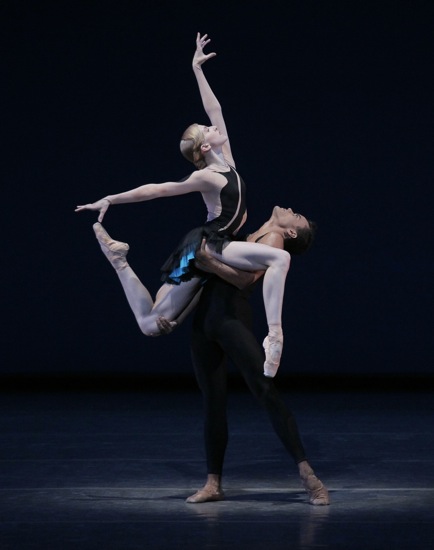
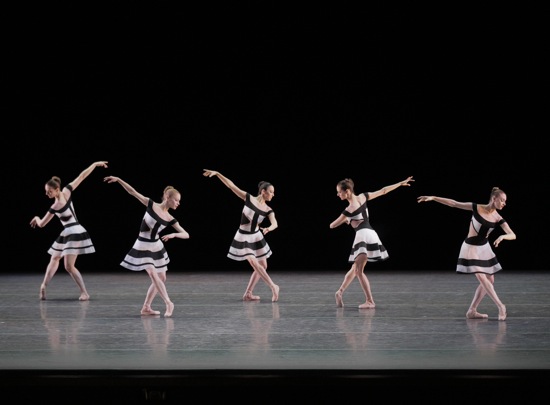
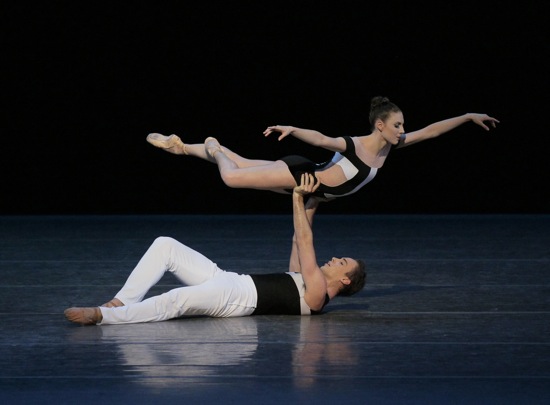
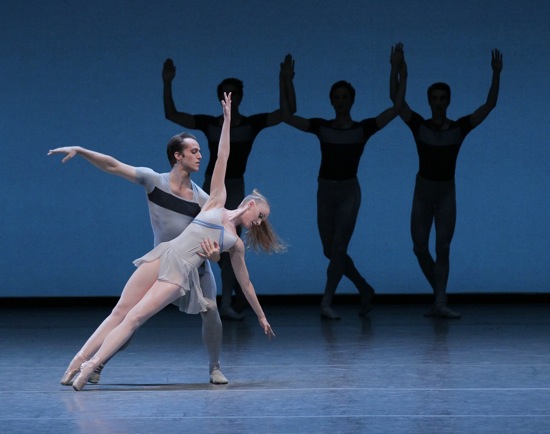
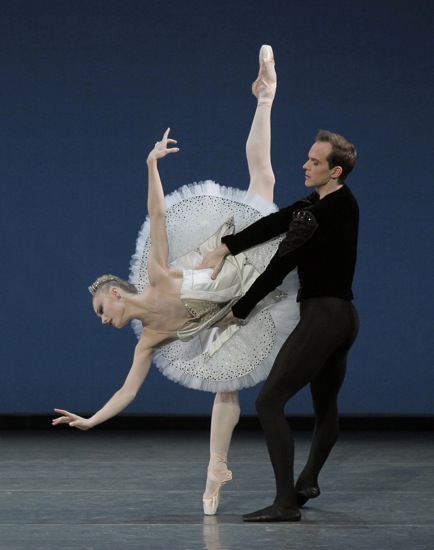
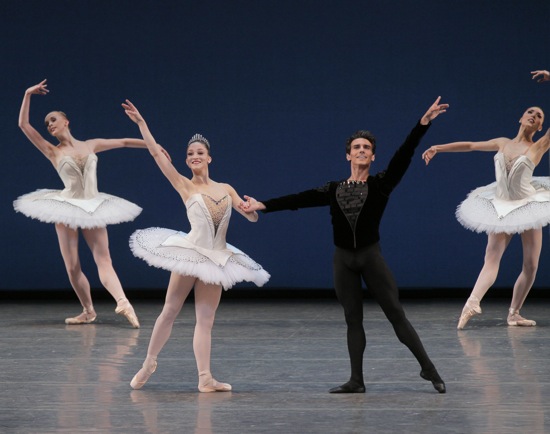
Thank you, Deborah, for another beautifully written review of New York City Ballet: The New and the Refurbished.
I especially appreciate your ability to not only describe what you saw, but to allow me to feel that I was sitting in the theater with you. Again, many thanks. Richard Gibson
Ditto.